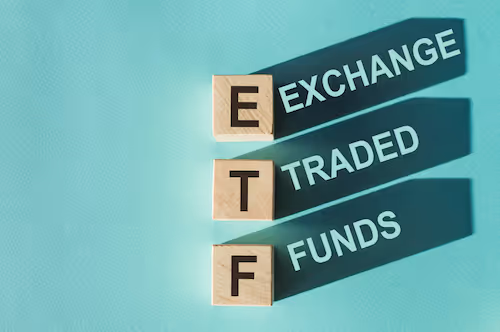Investing corporate cash surplus in low-risk ETFs: a strategic approach
Discover and decode finance and emerging technologies with Velesios, a company that empowers businesses and individuals to earn daily interest on their cash with security and flexibility.

For businesses with surplus cash, deciding where to invest these funds is crucial for ensuring financial stability and growth. Exchange-Traded Funds (ETFs) with risk levels ranging from 1 to 3 offer a balanced approach, providing a secure yet potentially rewarding avenue for corporate treasury management. Here’s why investing in low-risk ETFs can be a strategic move for businesses.
Understanding ETFs and risk levels
ETFs are investment funds traded on stock exchanges, similar to stocks. They typically track an index, sector, commodity, or other assets, providing broad market exposure. ETFs are categorized by risk levels, which help investors understand the potential volatility and return of the fund:
Risk level 1 - very low
These ETFs are considered very low risk and usually invest in highly secure assets like government bonds or high-quality corporate bonds. They offer stability and are less susceptible to market fluctuations.
Risk level 2 - low to Moderate
These ETFs carry a low to moderate risk and might include a mix of bonds and equities. They offer slightly higher returns than Level 1 ETFs but come with a bit more volatility.
Risk level 3 - moderate
These ETFs are moderate in risk and often have a balanced mix of equities and bonds. They aim for higher returns than Levels 1 and 2 but with increased exposure to market risks.
Benefits of investing in low-risk ETFs
Diversification
ETFs inherently offer diversification by tracking a wide array of assets within a single fund. This diversification helps mitigate risk by spreading investments across various sectors or asset classes, reducing the impact of any single asset's poor performance on the overall investment.
Liquidity
ETFs are traded on major stock exchanges, providing high liquidity. This means businesses can quickly convert their ETF holdings into cash if needed, offering flexibility in managing cash flow and responding to financial needs.
Cost efficiency
ETFs generally have lower expense ratios compared to mutual funds, making them a cost-effective investment option. Lower costs can significantly impact overall returns, especially for large corporate investments.
Transparency
ETFs provide transparency as they typically track well-known indices or baskets of assets. Investors can easily understand what assets they are exposed to, aiding in better financial planning and risk assessment.
Professional management
While ETFs are passively managed, they are structured to follow specific indices or strategies managed by financial professionals. This professional oversight ensures that the ETF adheres to its investment objectives without the need for active management, which can be costly.
Strategic considerations for corporate investors
Alignment with financial goals
Businesses should align their ETF investments with their financial objectives and risk tolerance. Low-risk ETFs are suitable for preserving capital while achieving modest growth, making them ideal for conservative investment strategies.
Market conditions
Understanding current market conditions and economic forecasts can help businesses choose the right ETFs. Even low-risk ETFs can be affected by market dynamics, so staying informed is crucial.
Regulatory and tax implications
It’s important to consider the regulatory environment and tax implications of investing in ETFs. Consulting with financial advisors can help navigate these complexities and optimize investment outcomes.
Conclusion
Investing a corporate cash surplus in low-risk ETFs offers a strategic balance between security and growth potential. These investment vehicles provide diversification, liquidity, and cost efficiency, making them an attractive option for businesses looking to optimize their treasury management. At Velesios, we are committed to guiding businesses through the complexities of financial investments, helping them leverage ETFs to achieve their financial goals.
If you'd like to find out more about the investment products we offer at Velesios, we're pleased to present them here.

From spreadsheets to strategy: how digital tools reinvent corporate cash management

The French paradox: record cash levels, record inaction to put that money to work

The invisible inflation: how low yields quietly erode French corporate cash

We care about your data and only use cookies to improve your user experience. By using this website, you agree to the use of these cookies in accordance with our Privacy Policy.
.svg)